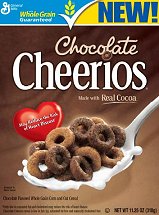chocolate education
Hints for Molding Chocolate
May 10, 2010
This is the second part of the series. If you missed the first part, or you'd like a review, please see Tips for Molding Chocolate.
Now that you're caught up, here are my Extra Special Helpful Hints when working with chocolate molds.
Read more
Tips for Molding Chocolate
April 29, 2010
Molded Chocolate (not to be confused with moldy chocolate!), or chocolate from molds (moulds), has been around for a long time.
Most chocolate molds are made of either metal or plastic. They can be flat, to shape chocolate like a candy bar, or three dimensional, to shape like an Easter bunny.
If you are a beginner at working with chocolate, start with a flat plastic mold with small cavities of simple shapes. You can buy these at craft stores or baking/candy supply stores or online at a number of candy-making supply websites.
Read more
Trader Joe’s Dark Chocolate Nibs
March 2, 2010
Cocoa (or Cacao) Nibs are made from cocoa beans after they get separated from their thin shells and roasted. The bulk of nibs produced are ground into chocolate liquor, either used as unsweetened baking chocolate or as the main ingredient of chocolate bars and candies.
Roasted cocoa nibs are not for everyone. They taste rather bitter because they are not sweetened. If you can get past the bitterness, you’ll find they do taste rich and chocolaty and have a crunch similar to nuts. In fact, nibs are often used to replace nuts in cookies and granola recipes.
Troubleshoot Chocolate Tempering
February 18, 2010
Recently I was asked about tempered chocolate that fails to keep a good shine and what can be done to fix that? (See comments on how to temper chocolate page.)
That's a really good question. Concerns about the streaking and the lack of shine make me think about how temperatures, crystal development and the appearance of chocolate are all connected.
Properly tempered chocolate is shiny and uniform in color. When chocolate has streaks and does not shine, it indicates that at some point in the production process, the chocolate solidified without being in a properly tempered state.
Read more
Chocolate and Romance: A Great Pairing
February 8, 2010

Like chocolate, for instance.
Read more
Chocolate Covered Strawberries
February 2, 2010
Have you ever cut corners while cooking? Ever used short cuts that the original recipe had you make from scratch?

One thing I have learned from my experience working with chocolate is that there are some short cuts that work and some that don’t.
Read more
Healthy Chocolate
January 26, 2010
According to the USDA website, www.usda.gov, chocolate and cocoa powder contain “hefty quantities of natural antioxidants called flavonoids…..antioxidants are thought to be effective in helping to prevent cancer, heart disease, and stroke.”
How do anti-oxidants help us? “Anti”-oxidants counteract the negative effects of oxidation on our bodies. Oxidation damages cells and tissues. What is oxidation, you ask?
Read more
Chocolate Cheerios
January 18, 2010
It has been a while since I had Cheerios for breakfast. For me, Cheerios was the cereal I fed my toddler to keep him quiet in church, not something I was interested in eating for breakfast. What got my attention recently is the new Chocolate Cheerios.
 According to the Cheerios website, Chocolate Cheerios is “a perfect balance of whole grain goodness and a delicious touch of chocolate taste in every bite.”
According to the Cheerios website, Chocolate Cheerios is “a perfect balance of whole grain goodness and a delicious touch of chocolate taste in every bite.”
I am a fan of whole grain goodness, but I am even more a fan of chocolate!
Read more

